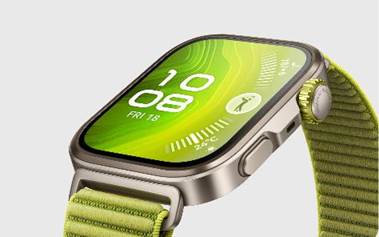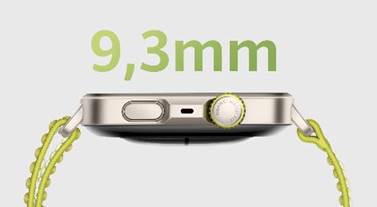Ultra-thin
smartphones have captured the market’s attention, flaunting sleek designs that
seduce tech enthusiasts. These impressive devices, flat as a wafer, raise the
question of whether their allure is purely aesthetic or if there’s more to meet
the eye. Users across the globe are intrigued by the blend of technology and
style. As these enticing gadgets continue to appear in pockets, it’s critical
to assess if they’re more than just fashion statements. This blog explores the
benefits, compromises, and user experiences of owning such slender devices,
helping you decide if an ultra-thin smartphone is the right choice for you. The
HONOR 400 Pro
is a perfect example of a device that blends cutting-edge technology with an
ultra-thin profile, showing that elegance can go hand in hand with performance.

What Defines Ultra-Thin?
An
ultra-thin smartphone measures less than 7 millimeters in thickness. This
benchmark sets them apart from traditional variants that often range above this
size. It’s not just about shaving off those extra millimeters; it’s about
packing powerful features into a compact form. Engineers strive to achieve this
slimness without sacrificing performance, fitting essential components within
the narrow confines. Designs are sleek, and elegance becomes the norm. They are
a testament to advances in miniaturization technology, where every micro-detail
counts. So, if you are holding a device that fits comfortably in your hand with
an elegant silhouette, it’s likely an ultra-thin smartphone.
The Appeal of Sleek Design
Sleekness
extends beyond mere looks, embodying an aesthetic that signals innovation. It’s
elegance in your palm that speaks volumes in today’s digital transactions and
interactions. The slim figure of these smartphones provides a tactile pleasure
when used. Their minimalist stretch transforms ordinary usage into a statement,
drawing users to explore the design allure. When face-to-face with a gleaming
display, encased in a svelte body, the appeal is undeniable.
Premium Aesthetics & Modern Materials
Ultra-thin
smartphones are crafted using cutting-edge materials like Gorilla Glass,
aluminum, and high-grade plastics that offer both strength and a sophisticated
finish. These materials lend a fresh, minimalistic appeal that reflects modern
design trends, captivating tech-savvy users. The artistry of these phones lies
in their ability to integrate advanced material technology with visual
splendor. Brands meticulously choose details that emphasize sophistication,
creating a seamless body that feels premium. From brushed metal to glossy
glass, each material contributes to a distinct tactile experience, making the
device both a functional tool and a fashion accessory.
Portability & Ergonomic Benefits
These
lightweight devices redefine what it means to carry technology with ease.
Comfort blends with portability, making them pocket-friendly and easy to
handle. Users appreciate that they can slip these smartphones into small bags,
coat pockets, or even snug jeans without hassle. Their ergonomic design ensures
that they sit comfortably in the hand, allowing extended use without fatigue.
Whether texting, taking photos, or watching videos, ultra-thin smartphones
offer ease of navigation. Their portability aids mobility, making them ideal
for on-the-go lifestyles, where every gram of reduction adds value.

Brand Differentiation in a Saturated Market
In
a competitive market, brands leverage thinness as a selling point, showcasing
technical prowess and superior craftsmanship. Sleekness becomes a brand’s
signature, distinguishing it from competitors
cluttering store shelves. As consumers face a sea of options, a distinct
ultra-thin design can tip the scales. This strategic differentiation not only
attracts a tech-savvy audience but also sets a new benchmark for innovation.
Manufacturers invest in research and
development to maintain slender profiles while packing in unique features,
reinforcing brand identity and customer loyalty.
The Trade-Offs Behind the Thinness
While
ultra-thin smartphones allure with grace, they demand compromises. The pursuit
of sleekness often leads to challenges that might affect user satisfaction.
Battery Life Compromises & Efficiency Limits
Sleek
design means less internal space, often resulting in smaller batteries. Users
may find themselves charging more often, as greater power consumption from
high-end processors drains cells quickly. Efficient usage becomes crucial, with
many relying on power-saving modes to extend battery life. However, these
efforts sometimes fall short, limiting the device’s potential to take on a full
day of intense use without a recharge. Energy density must balance the slender
frame, creating a challenging task for engineers.
Durability Risks: Fragility & Thermal Issues
Ultra-thin
builds, while visually appealing, can risk increased fragility. These
smartphones may be more prone to cracks or damage from accidental drops.
Limited internal space might affect heat dissipation, causing devices to run
hotter during prolonged use. Cases and screen protectors become essential to
protect their delicate structure. Users must handle them with care, aware that
their slim nature may not withstand the same strain as their thicker counterparts. It’s a world where aesthetics
fight with robustness, compelling consumers to weigh the pros and cons.
Real-World Reviews & User Sentiment
User
reviews reveal a divide; some praise the ultra-thin smartphone’s elegance and
portability, while others lament its drawbacks. Real-world usage offers
invaluable insights—many appreciate the convenience and style that these
devices bring to daily routines. However, they critique the need for frequent
charging and concerns over durability. Feedback underscores the importance of
understanding user needs and lifestyles. Enthusiastic adopters of technology
are drawn to the modern silhouette, whereas practical users may prefer
reliability over appearance. A shared sentiment emphasizes informed choices,
balancing style and function to meet individual expectations.
Conclusion
Ultra-thin
smartphones exemplify a blend of art and engineering. Their allure lies in a
flawless design that challenges technological constraints. Yet, the trade-offs
are real—battery life, durability, and features demand consideration. User
reviews highlight mixed experiences, shaping perceptions of these innovative
devices. When choosing an ultra-thin smartphone, think about priorities. For
those captivated by sleekness, they offer an attractive option. However, it’s
essential to weigh the compromises to ensure they meet your functional needs
and lifestyle.



